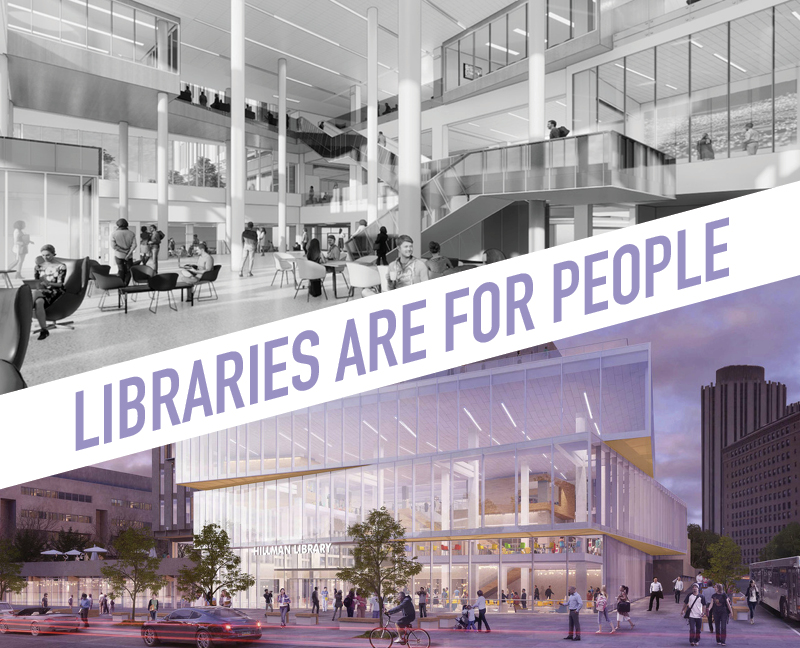Insights
Sep 5, 2024 _ insights
Libraries Are for People: Connecting University of Pittsburgh’s Hillman Library to Campus and Community
This is part two of our series on academic libraries. Read part one here.

Academic libraries are grappling with an identity crisis. No longer seen as merely archives for print materials or silent study halls for solitary work, libraries can connect town and gown in ways that enrich both student and public life. Many academic library buildings are campus icons, but ones that were built to house and protect books, not support people with daylight, fresh air, and views. In our previous installment of Libraries are for People, we shared insights about how architecture and design strategies are supporting programming changes at University of Pittsburgh’s Hillman Library. In Part II, we’re focusing on how architecture and design help reaffirm Hillman Library’s presence at the intersection of campus and community.
So, what are the student, campus, and community changes impacting academic libraries? How can architecture and design respond? Read on!
1. Accessibility
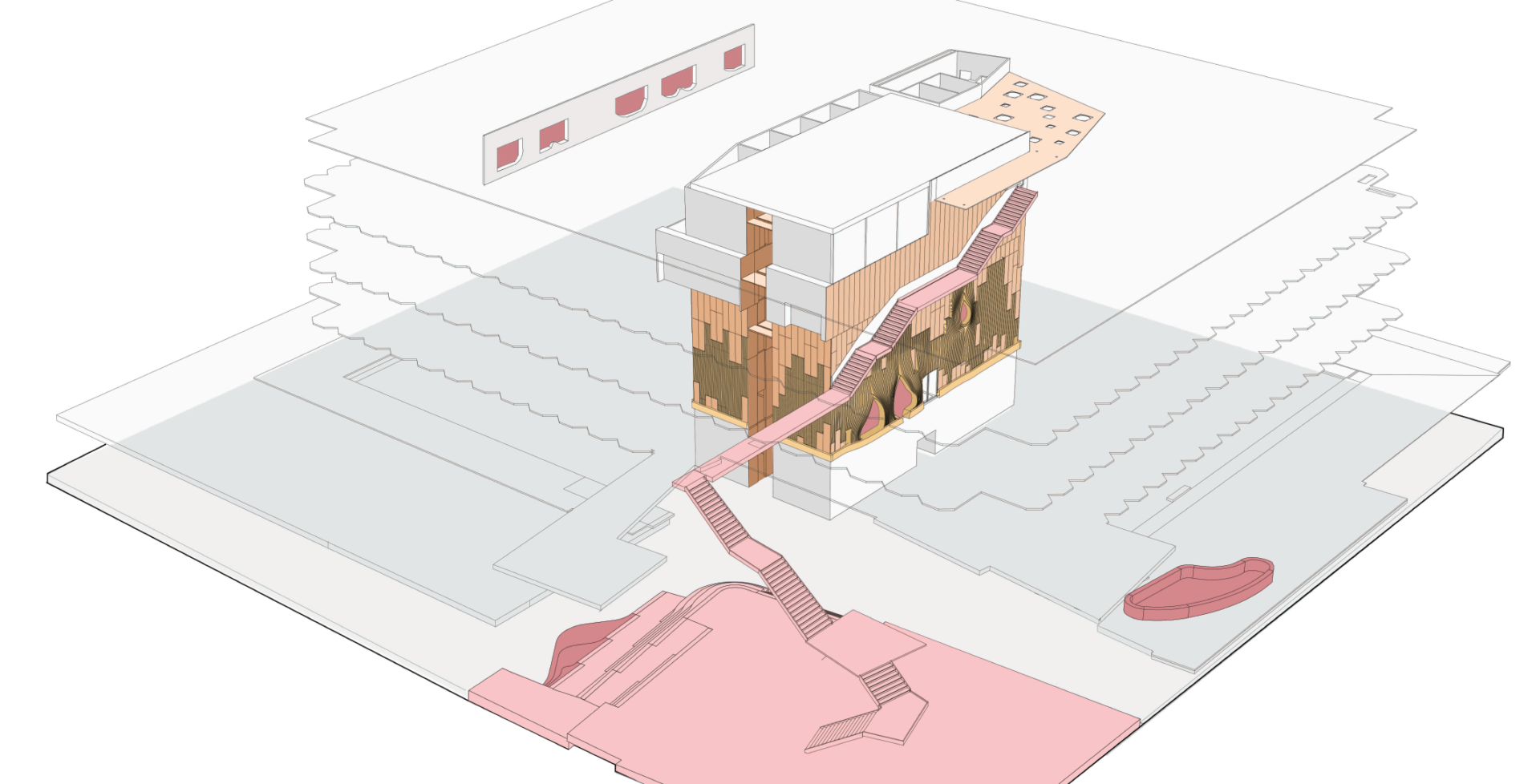 Not only do libraries need to be physically accessible to students of all abilities, they also need to feel approachable and welcoming.
Not only do libraries need to be physically accessible to students of all abilities, they also need to feel approachable and welcoming.
Hillman’s response: A new, ADA entrance on Forbes Avenue combined with a new double height entry on Schenley Drive are designed to help draw students up to multiple floors within the building. Making the new monumental stair visible from the exterior invites use. The new entry volume, at the busiest intersection on campus (where Forbes and Schenley cross) clearly conveys “this is the main entry” and its transparency invites curiosity and helps draw people in.
2. Connecting to the outdoors
As places of active learning, students, librarians, and faculty are moving about. As places of connection, the library fosters socialization as well as study. As humans, people are wired to seek out connections to nature.
Hillman’s response: More outdoor spaces, like the terrace on level 1 (with a great view of the university’s landmark Cathedral of Learning) and the rooftop terrace on level 3, atop Hillman’s entry addition. Hillman’s new plaza will help the library feel more connected to Schenley Plaza across the street.
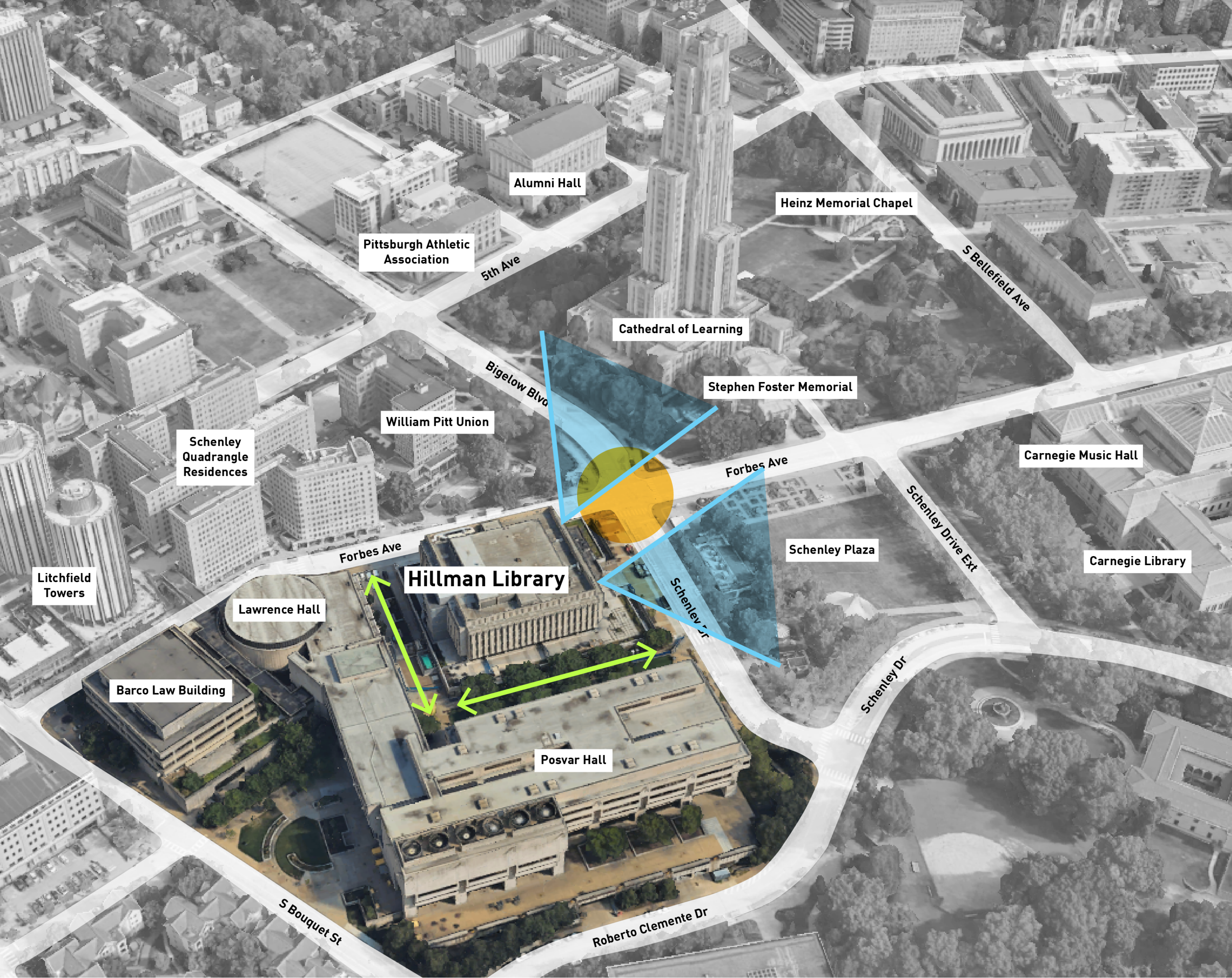
3. Blurring the Town/Gown line
Enhancing Hillman’s connection to public parks, plazas, and cultural institutions helps reinforce the library’s role in Pittsburgh’s vibrant public life.
Hillman’s response: By removing a fortress-like, 15-foot high screening wall on Hillman’s north, east, and south sides, the library gained an additional 20 feet of outdoor space for café tables and chairs and that helps create the sense of an inviting public plaza. The removal of the battered wall and the new entrance help Hillman feel better connected to Schenley Plaza, an adjacent, beloved public park heavily used by students and community members alike. Just across Schenley Plaza are the Carnegie Library of Pittsburgh Main Branch, Carnegie Museum of Art, and Museum of Natural History. Hillman’s transformation helps reassert its presence in this cultural ecosystem.
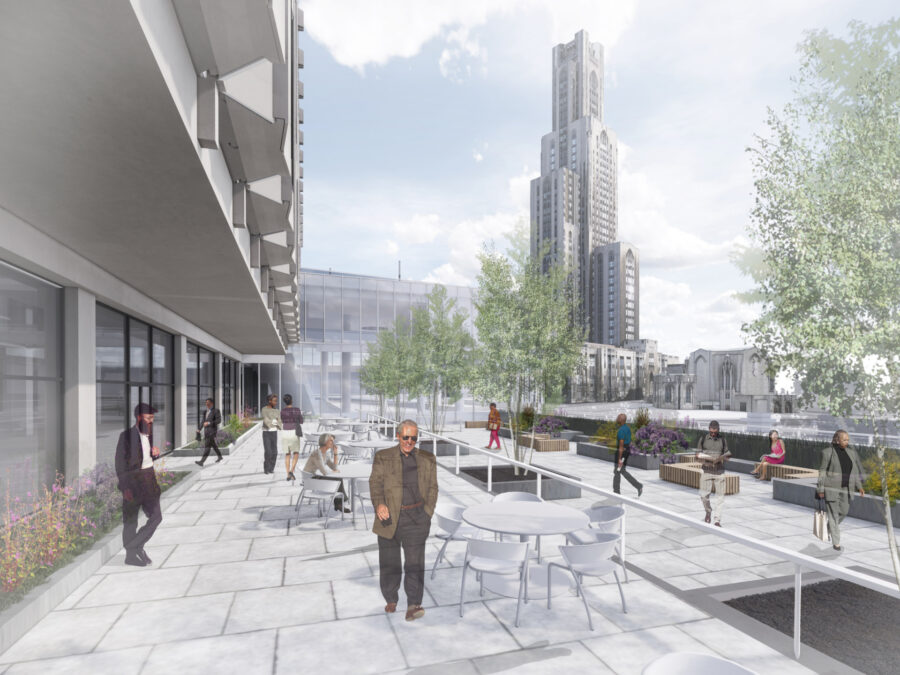
4. Softening Book Bunkers
Many mid-century academic libraries were designed to store and protect books. But as digitization makes online book and periodical sharing the norm, libraries are removing unused book stacks to make more room for people. This brings opportunities to make spaces feel lighter, brighter, and more welcoming.
Hillman’s response: Using glass, wood, and stone to make an inviting and distinct sense of place for people. Abundant glass in the new entry volume brings in lots of light and makes the space feel inviting day or night. Wood is used as an inviting cue to highlight gathering spaces in the entry and bring warmth to Hillman’s original concrete construction.
The monumental new stair within the new entry makes the space more humane and friendly by making it easy to circulate around the space and discover resources, new passions, or friends.
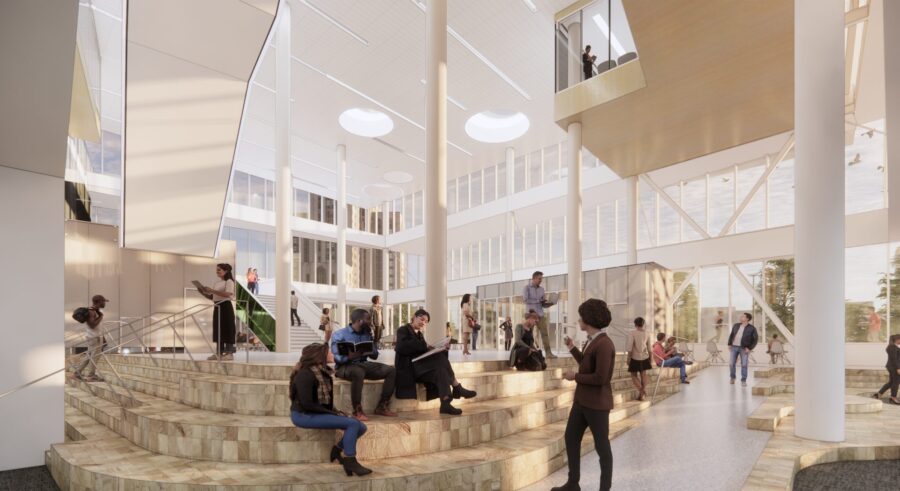
5. Sustainability
Leading universities are setting ambitious carbon reduction targets that go beyond LEED certifications. Breathing new life into existing campus buildings helps meet those targets.
Hillman’s response: The project is targeting LEED Platinum. The project will have a 250 kw rooftop solar array (these kinds of photovoltaic arrays—PVs for short—are part of a campus wide initiative to mount PVs on roofs of existing buildings) and construction waste is limited by reusing stone. Additional measures include: rainwater capture, use of native plants with limited irrigation, use of low VOC materials, LED lighting, a green roof, and capitalizing on Hillman’s location along a public transportation corridor.
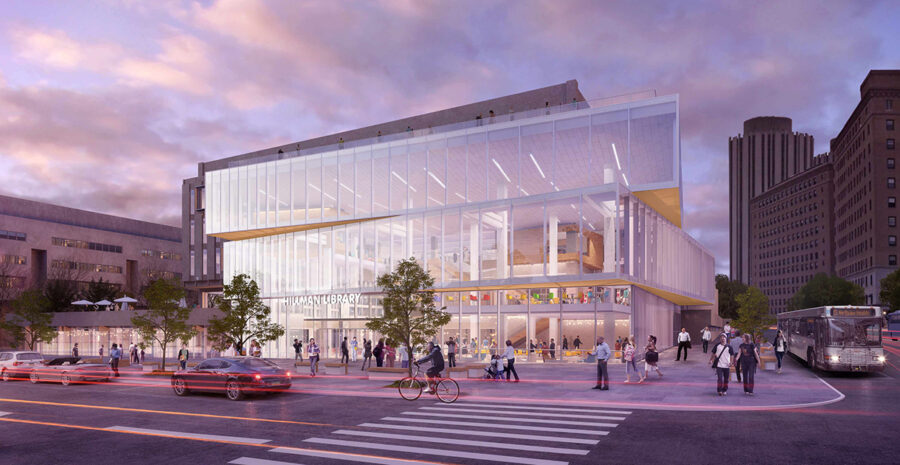
What hasn’t changed?
Academic libraries are the heart and soul of university campuses. Owned by none, shared by all, libraries foster connections across disciplines and bridge academic and public realms. As learning and teaching evolve to support new generations of students, campus libraries must evolve too. Transformations like Hillman’s breathe new life and purpose into libraries and position them as people magnets for decades to come.
 Matthew Plecity, AIA, ASLA is a principal at GBBN. An architect with a landscape architecture background, Matt leverages his understanding of site and context to design buildings with strong relationships to their environments. As part of the leadership team for GBBN’s Higher Education Market, he regularly shares his insights into campus design, sustainability, academic libraries, and research spaces at regional, national, and international conferences. Matt loves collaborating with clients, colleagues, and consultants to build bold ideas like University of Pittsburgh’s Hillman Library renovation and Penn State Behrend’s Federal House.
Matthew Plecity, AIA, ASLA is a principal at GBBN. An architect with a landscape architecture background, Matt leverages his understanding of site and context to design buildings with strong relationships to their environments. As part of the leadership team for GBBN’s Higher Education Market, he regularly shares his insights into campus design, sustainability, academic libraries, and research spaces at regional, national, and international conferences. Matt loves collaborating with clients, colleagues, and consultants to build bold ideas like University of Pittsburgh’s Hillman Library renovation and Penn State Behrend’s Federal House.
Sarah Kusuma Rubritz , AIA is an associate at GBBN. Informed by the latest research and design technology, Sarah has helped shape GBBN’s approach to academic libraries as they welcome new generations of students and learning styles. Whether she’s designing a library, an archive, an arts space, or a workplace, Sarah employs her talent for seeing the big picture without losing sight of the minute details that catapult projects beyond client expectations.
, AIA is an associate at GBBN. Informed by the latest research and design technology, Sarah has helped shape GBBN’s approach to academic libraries as they welcome new generations of students and learning styles. Whether she’s designing a library, an archive, an arts space, or a workplace, Sarah employs her talent for seeing the big picture without losing sight of the minute details that catapult projects beyond client expectations.
